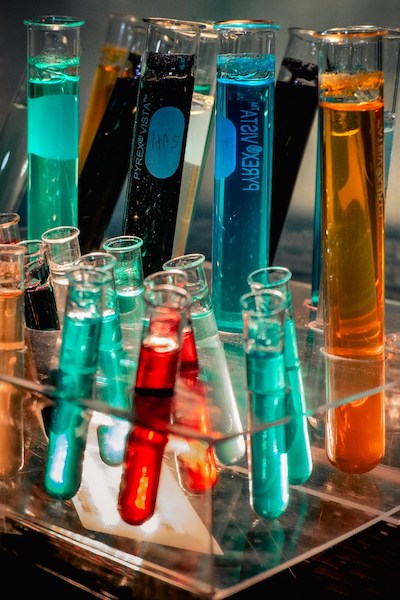Many scientific advancements have vastly improved the quality of human life, but not every breakthrough has been a boon. We need look no further than the invention of nuclear weapons for proof of that. Plenty of authors have turned their minds to imagining the horrors that can result from tinkering with science, from the murderous (but misunderstood!) monster brought to life in Mary Shelley’s Frankenstein (1818) to the genetically engineered dinosaur mayhem of Michael Crichton’s Jurassic Park (1990).
Along the same lines as those sci-fi classics, here are five books that explore the dire consequences of science gone wrong, including cruel human experiments and cutting-edge technologies going haywire.
Intercepts (2019) by T.J. Payne
Nobody likes it when work follows them home, but it’s a particularly big problem for Joe Gerhard, who works at a secret government facility that conducts inhumane experiments on people. By day, Joe supervises the tests, which involve human subjects being kept in a near-constant state of sensory deprivation—a state which unlocks abilities that can be put to use by the government. By night, Joe tries to be the best dad he can be to his teenage daughter Riley—but that job becomes a lot more difficult when Riley starts seeing a strange ghostly figure.
For me, the scariest thing about Intercepts isn’t where the story ends up—although it is suitably bloody and dark, while also being grimly satisfying—but where it starts. Government-organized and funded human experimentation is well-documented throughout history and it’s absolutely terrifying. Even though Intercepts goes in a wild sci-fi direction, the basis of the story is sadly all too grounded in reality.
Final Girls (2017) by Mira Grant
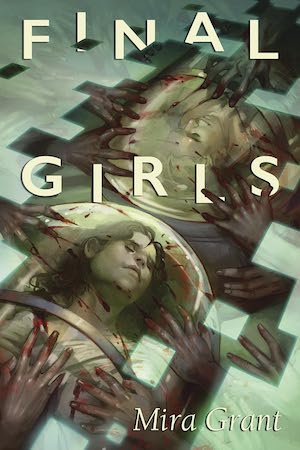
Mira Grant’s novella Final Girls is about a new experimental therapy that uses virtual reality to run people through horror movie scenarios in an attempt to heal their past trauma (that’d be a hard pass from me!). Reported results have been incredible so far, but journalist Esther Hoffman—whose bread and butter is debunking pseudoscience—is unconvinced.
Although Esther is hesitant to try it out for herself, she agrees to undergo a session in order to tear it apart more thoroughly give it a fair shot. The woman behind the technology, Dr. Jennifer Webb, is confident that Esther will change her mind and plans to use the journalist as a selling point to convert other skeptics.
The experience of regression therapy via horror movies (although Dr. Webb insists that it’s more complex than that) is supposed to be scary, but, of course, things quickly go off the rails. The short page count and lightning fast pace make the story fly by, but the horrifying VR scenarios still manage to pack a gruesome punch.
The Queen (2024) by Nick Cutter
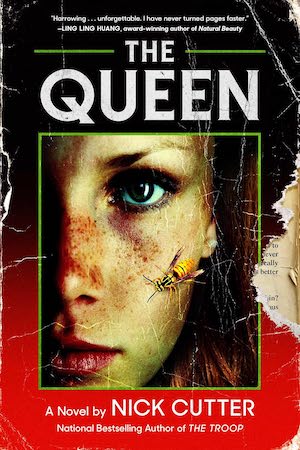
Nick Cutter is no stranger to imagining the horrifying possibilities that science can unlock—The Troop (2014), The Deep (2015), and The Breach (2020) all explore this topic—and his latest offering, The Queen, follows suit. The story starts with teenager Margaret trapped in the kitchen of a country club, where people are mutating into grotesque forms in the ballroom. We then cut to one day earlier, with Margaret waking up to a text from her best friend, Charity… which is unexpected, considering Charity has been missing for the past few weeks.
Over the course of the day, Margaret follows the breadcrumb trail that Charity texts to her, which gradually reveals why she’s missing. The journey takes Margaret all over town—ending at the country club—and exposes the secrets behind the mysterious Project Athena, an experiment spearheaded by an absurdly rich tech guy called Rudyard Crate, who has an unhealthy obsession with insects.
The Queen features wasps and ants in abundance, plus many squirm-inducing descriptions of repulsive mutations. But running alongside all of the body horror, there’s also an emotional story of female teenage friendship in all of its loving—and sometimes messy—glory.
Our Hideous Progeny (2023) by C.E. McGill
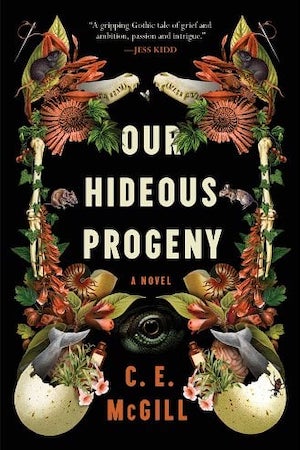
Our Hideous Progeny is linked to Mary Shelley’s Frankenstein, with main character Mary being the great niece of Victor Frankenstein. Mary never met Victor, but she comes across his scientific notes about fashioning a man from various body parts and then bringing him to life. Being a scientist herself—and desperately wanting to prove herself to the largely misogynistic scientific community—she decides to try and supersede her great uncle’s work.
The story takes places during the Victorian era, with the setting being split between the smoggy bustle of London and the misty quiet of northern Scotland. Rather than being outright scary, Our Hideous Progeny is wrapped in creepy Gothic atmosphere. Mary’s creation is certainly horrifying to some, but, like our main character, I’m a monster apologist. The creature in both this story and in Frankenstein just needs to be treated with kindness! The various men that Mary deals with are the true monsters of the story, but thankfully she’s buoyed up not only by her passion for science, but also by a budding sapphic romance.
Second Variety (1953) by Philip K. Dick
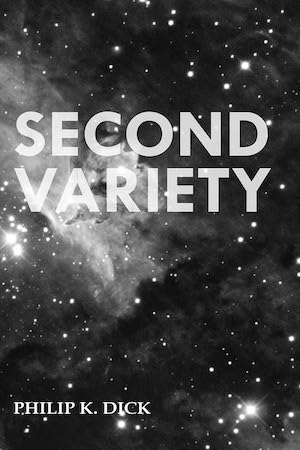
Second Variety takes place in a version of America that has been utterly ravaged by radiation bombs dropped by the Russians. Although the Americans immediately retaliated, Russia maintained the upper hand, eventually moving troops onto American soil—or, rather, into bunkers below American soil, because the surface is now a wasteland. But the playing field was leveled when American scientists created razor-filled spherical killing machines called “claws.”
Major Hendricks has to venture out of the safety of a bunker when he gets word that the Russians have a matter of extreme importance to discuss. While traveling across the wasteland, he learns that the claws—which are built by automated machines and which have been designed to repair themselves (people really don’t want to go near them!)—have now started making their own terrifying adaptations.
The story beats of this novelette likely won’t come as a surprise to anyone well-versed in sci-fi, but that doesn’t make this version of a robot-filled world any less scary.
This short list is clearly not intended to be exhaustive—there’s a wealth of classics that fit this theme, from H.G. Wells’ The Island of Dr. Moreau (1896) to Robert Louis Stevenson’s Strange Case of Dr. Jekyll and Mr. Hyde (1886), without even getting into the 20th century and more recent works! But I’d love to hear your recommendations for books and stories that explore the horrors of science—please leave any examples not yet mentioned in the comments below!
